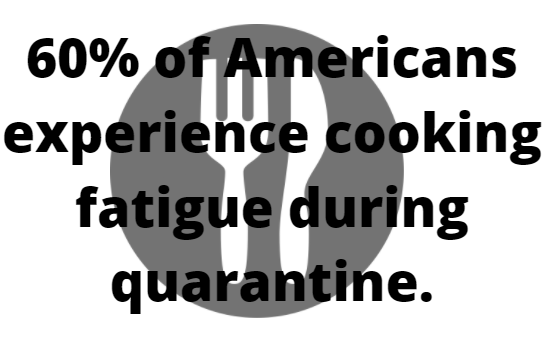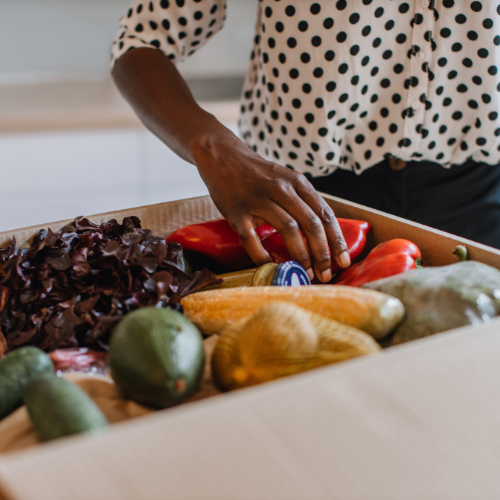Even before the 2020 lockdown happened, meal kits were already on the rise across the United States.
However, not a lot of consumers were sold on it. As the pandemic started and the government implemented lockdown, there was a steady and gradual uptick in meal delivery services.
It’s the ideal way of maintaining social distancing and staying home while still getting creative and healthy meals for consumers.
According to Nielsen, meal kit delivery services grew by almost 20% in 2020 – and it’s still growing. That figure is equivalent to up to $135 million more dollars in earnings in 2020 than the meal delivery services industry saw in the previous year.
Meal Kits: Meeting the Needs of Today’s Consumers
While the pandemic and the lockdown contributed to meal delivery kits’ growth, this latest model is not the first meal delivery kit presented to the public.
In the past, meal delivery kits were not necessarily meeting the projected sales expectations for a number of reasons.
Meal kit companies failed to catch the attention of the consumers because of the following:
- Lack of available meal options
- Unclear understanding of what the consumers need and want
- Absence of promotion across all marketing platforms
Meal kit retailers definitely didn’t want to make the same mistake twice. Thus, these companies have employed various tactics to reach consumers.
Reaching a Wide Range of Consumers
The pandemic has opened up an opportunity for retailers to reach more consumers with their meal delivery services.

Before, the target audience for meal delivery kits was people between 35 and 45.
However, the pandemic allowed all consumers of different ages and incomes to cook more from home. They seek more assistance and inspiration for their daily meals. Thus, the a growing need for more meal kit deliveries.
Categories of Meal Kits
There are three categories of meal kits:
- Ready-to-eat meals
- Pre-prepped meal kits that require some level of cooking
- Customizable meal kits to fit special diets and consumer preferences
One of the essential points that meal kit retailers must ensure is clear messaging.
This means that they need to communicate clearly and concisely – what type of meal kits are available to the consumers.
On top of that, there must be a clear message of the meal solutions consumers can take advantage of.
More Inspired Meals
Because of the lockdown, more people are eating at home. For meal kit retailers, this trend means a broader range of consumers looking for more inspired meals.
From single households to busy families – more people who have no choice but to eat at home look to meal kit delivery services to expand their cooking experience.
Now that we’re in a new year, the threat of the pandemic is still upon us. Social distancing is still strongly recommended, and people are advised to stay at home if they can.
However, what once felt like a new and exciting way to prepare meals felt like a chore again for many of us.

Surveys showed that up to 60% of Americans experience cooking fatigue, while the rest are keeping on planning their meals.
Through the meal kit delivery services, grocery retailers have this new opportunity to introduce new and exciting solutions to the sometimes-exhausting question of “What’s for dinner?”
During this lockdown, many consumers are balancing new, hectic, and unpredictable schedules. On top of that, we are all dealing with the mental toll of the pandemic.
Consumers are clambering to figure out tasty and healthy meals – at the best possible value.
Thus, meat kit providers offer a variety of meal solution categories: ready-to-eat, heat-and-eat, prep-and-eat, and grab-and-eat.

These meal kit delivery options are packaged in creative packaging that clearly distinguishes the meal solution it’s offering.
In addition, meal kit providers have developed a one-stop-dinner model. The supermarket retailer takes charge of this meal kit model.
The one-stop-dinner model will typically have up to five main ingredients from the featured ingredients and recipes combined in one merchandise for easy shopping.
For instance, if one of the latest week’s recipes is Chipotle Chicken Chili, consumers could expect to find the following in the meal kit: packaged chicken breast, kidney beans, black beans, canned chipotle peppers, corn kernels, chili seasoning, and the corresponding sides to the dish.
On top of that, these one-stop-dinner models will offer an alternative protein option for the customers to choose from.
The seamless and easy incorporation of all these ingredients allows for a quick, easy, and relatively healthy dinner option – that’s not fast food or from the drive-thru.
Ultimately, the convenience factor, elevated quality and taste, and healthy alternatives are what attract consumers to meal kit delivery services.
Flexible Meal Kit Options
Many consumers find in-store meal kit options a more acceptable way of trying out the whole concept – without committing to a subscription service.
The majority of meal kit delivery services are subscription based. This means that customers will need to sign up for the service and try their offering for a time. These meal options are planned out in advance.
On the other hand, in-store meal kits are more flexible. They are also available in a variety of choices. This setup is especially ideal for consumers who want to try the service for the first time.

They can try a single meal and see how they like it.
They don’t have to buy a week’s or months’ worth of subscription right away and risk being locked in the plan if they don’t like the meal kit delivery service.
On top of that, there’s more liberty to make impulse buys. You can purchase as many meal kit products as you want – or don’t; it’s entirely up to you. Consumers appreciate not being roped into these things.
No Unwanted Meal Surprises from In-Store Meal Kits
Purchasing in-store meal kits also take away the surprise factor of what you are getting. You can inspect and check what the included ingredients are before you buy the kit instead of subscription-based meal kit plans.
With subscriptions, there is already a set menu for the day or for the week. You don’t get to see the proteins or produce before they deliver the crate to you.
Another difference that consumers take advantage of from in-store meal kits is the availability of other ingredients. When they purchase the kit at the supermarket, and they decide to swap one ingredient for another, they can find almost anything they want at the store.
Meal Kits Provide Variety and Value
Compared to subscriber-type meal kit plans, the in-store options always bring variety and value. Consumers appreciate options. With meal kits, they are always presented with a wide assortment of meals.
On top of that, there is something to be said by getting to pick the produce yourself from the store, inspecting it, and deciding if you want it to go into your cart.
